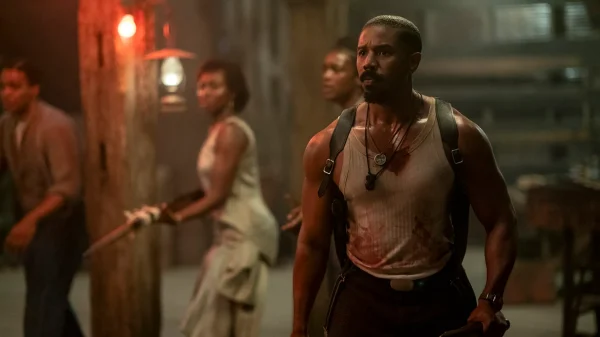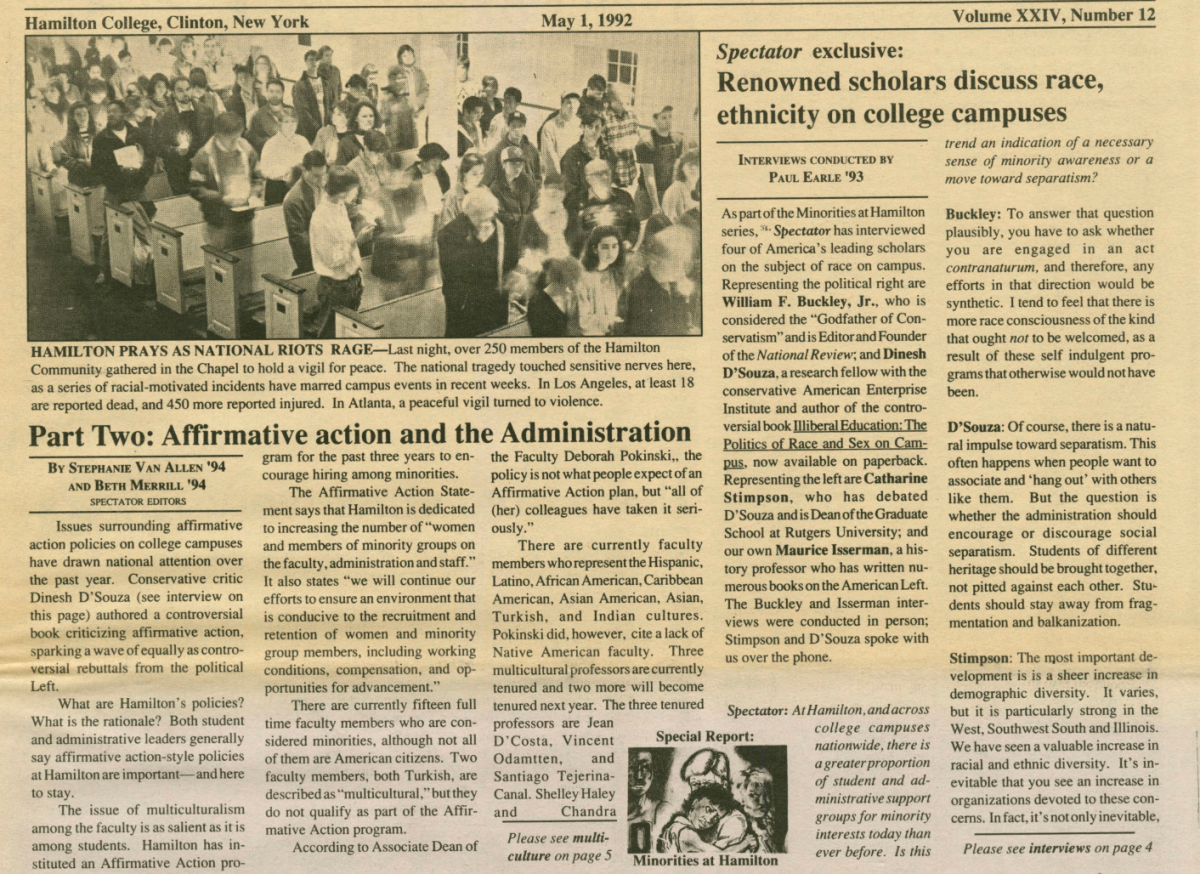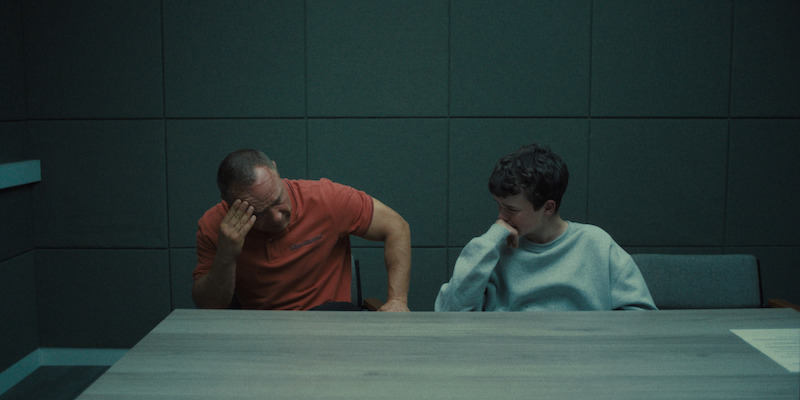
A soulful croon and strumming guitar set the dance floor literally alight in Ryan Coogler’s Sinners (2025) as spirits rise from the dead to jive alongside the living. The ghosts don outfits spanning African history of the past and future and twirl across the screen in a spinning show of color, movement and community. While the demonstration of cultural unity is a joyful one, a supernatural evil lurks just outside of the dance floor, lying in wait.
Sinners is Coogler’s fifth feature film, but the first crafted from entirely original material. Known for the Black Panther and Creed series, as well as the standalone Fruitvale Station (2013), Coogler often tackles African-American masculinity and systematic racial oppression within his work. Sinners explores such themes through a genre-defying lens of horror, musical and noir, a blend largely untapped by Coogler.
Set in 1932, Sinners follows identical twins Elijah and Elias (both played by Michael B. Jordan), nicknamed “Smoke” and “Stack” respectively, returning to their hometown in the Mississippi Delta. After striking it rich in Chicago, the brothers intend to buy a sawmill and transform it into a juke joint. The two hire a slew of staff for opening night, including family friend Cornbread (Omar Miller) as bouncer, Smoke’s former wife Annie (Wunmi Mosaku) as cook and several local musicians. Among the performers is Sammie (Miles Canton), the twins’ little cousin, who unknowingly carries the unique gift of awakening the dead with his music. Bloody chaos abounds as Sammie accidentally summons a vampire (Jack O’Connell) eyeing the juke joint for his next feast, leaving the group with no choice but to survive through the night.
Despite its unexpected turn from a poignant musical to gory horror, Coogler balances the mixing of genres seamlessly. From the film’s introduction, with a bloodied Sammie stumbling into a church with a mangled guitar, there is a fusion of song and fear that overlays the entire film. The scene intercuts second-long rips of violent imagery with the white, cleansed chapel before flashing back to the previous day. What follows is an exposition-laden hour that at times drags, but is necessary for setting up the primary relationships that compose the heart of the film. The tender love between Smoke and Annie, counteracted with the raw passion of Stack with old flame Mary (Hailee Steinfeld), puts forth a range of bonds for the viewer to latch onto and connect with.
From Mary’s first introduction, Steinfield is a standout. Often praised for her dialect work, Steinfield nails the Mississipian accent while delivering a performance that is full of the contradictions that define Mary’s character. Steinfield is sultry yet heartfelt, naive and vulnerable but at the same time aggressively violent. Newcomer Miles Canton as Sammie is also convincing, with the viewer watching as his hopeful, go-lucky attitude completely unravels throughout the course of the film. Mosaku as Annie and Delroy Lindo as pianist Delta Slim are highlights as well. Where the acting weakens is with lead Michael B. Jordan, a longtime collaborator of Coogler’s. While Jordan is given the difficult task of playing two characters, often within the same scene together, there is simply not enough variety when portraying Smoke versus Stack to grasp the differences between the twins. While Coogler gives hints to the viewer through costume, with Smoke wearing blue accessories and Stack in red, if a colored hat is what signifies a distinction in character, then the acting has fallen short.
Moving away from individual performances, the film’s score is a consistent highlight. Composed by Ludwig Göransson, a graduate school friend of Coogler who won an Academy Award for his work in Oppenheimer (2023), the score is heavily influenced by blues music of the 1930s and 40s. Göransson even performed the score using a 1932 Dobro Cyclops resonator guitar, the same model that Sammie carries throughout the film. Whether twirling at the juke joint or battling bloodthirsty vampires, the backdrop of the blues is always present, offering a constant reminder of the film’s ties to the Black community.
In a similar vein, while the film’s vampires may initially appear to be a zany choice, their inclusion lends itself to symbolic interpretation given the setting of the Jim Crow South. With segregation still very much rampant, the Black characters face frequent acts of discrimination, from Smoke and Stack being spit on by a White man to an encounter with the robes of the Ku Klux Klan. When the lead vampire, flanked by recently bitten Klansmen, literally salivates at the thought of overtaking the bodily autonomy from the Black community at the juke joint, there is a clear message of how African-American cultural contributions have been systematically erased. Specifically in terms of music, the blues is recognized in the film as a genre whose origin lies in the work songs and field hollers of the Deep South. The blues later became a cornerstone of American music, influencing jazz, rock and R&B to name a few, yet its cultural roots are often forgotten, as shown by the vampires stealing the life from their Black victims.
The critical acclaim and box office success of Sinners shows an appreciation for original films that has been largely absent in exchange for popular IPs. Coogler’s foray into genre-bending will hopefully not be his last as he continues to demonstrate a prowess for incorporating themes of societal discrimination into unique storylines. Oh, and give the soundtrack a listen, you will not regret it.

















